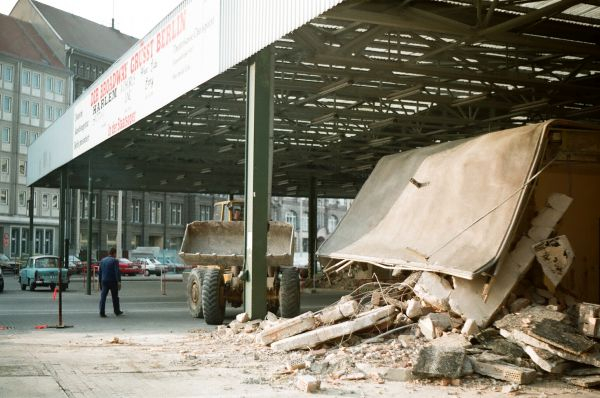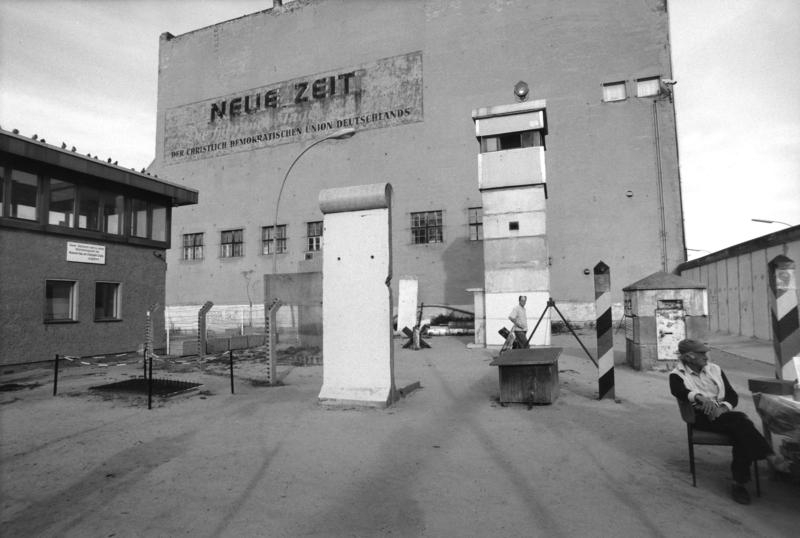Debate about the Place of Remembrance
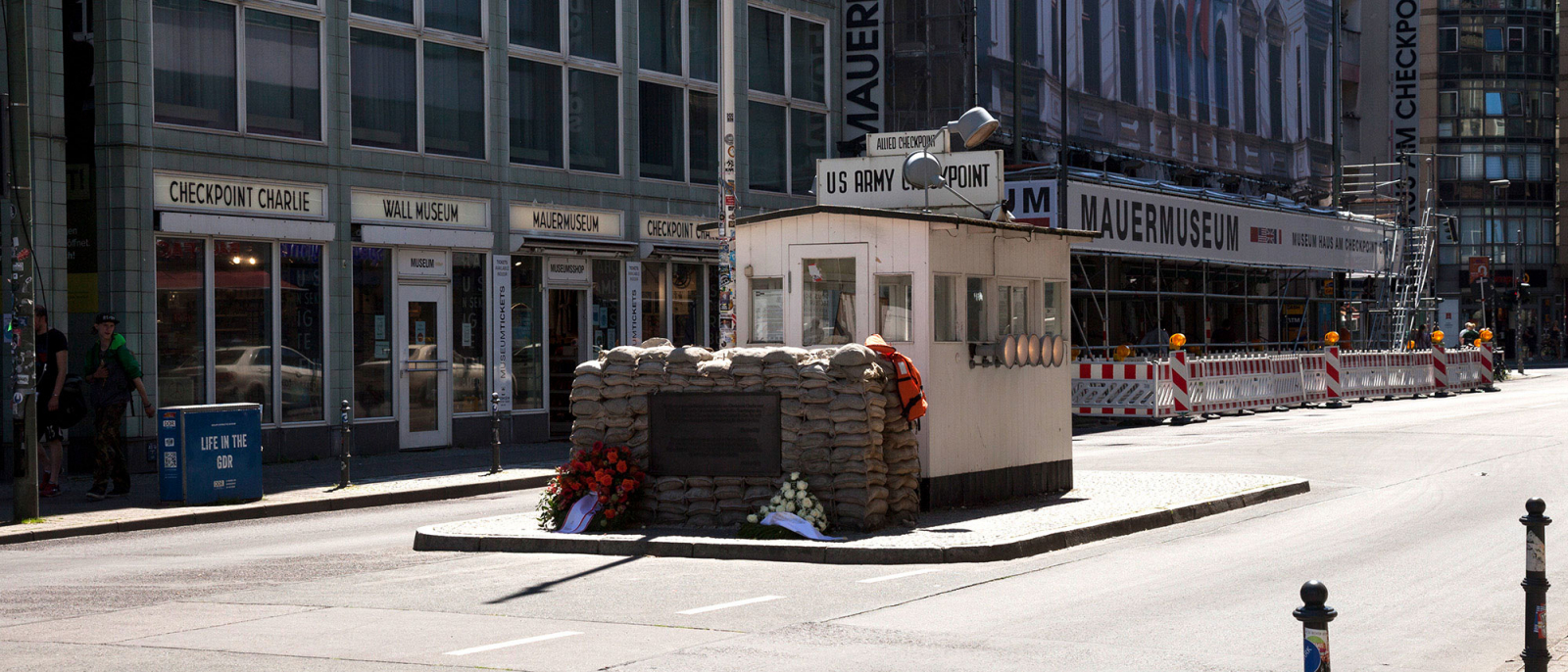
View of the rebuilt allied control booth, 2021 © Berlin Wall Foundation, Photo: Gesa Simons
Since the fall of the Berlin Wall, the development of the site has repeatedly been part of debates on urban development policy and the culture of remembrance. Private investors soon gave the area of the former border crossing a new face. Various private and civic initiatives have repeatedly campaigned against this development and against forgetting. At the same time, international tourism to Berlin increased, as did the number of daily visitors. One of the tasks of the planned “Forum Checkpoint Charlie” is to respond to both the debates and the expectations of visitors to the site.
As in the rest of the city, the GDR began demolishing the border installations at the border crossing at Friedrichstrasse and Zimmerstrasse in 1990. The Berlin Wall and border fortifications on the border strip gradually disappeared, along with the checkpoint buildings and the massive hall construction that covered the GDR border crossing.
The Western Allies’ control booth was ceremoniously dismantled on June 22 – on the occasion of the Two Plus Four negotiations in Berlin – and donated to the German Historical Museum. It was initially taken over by a small museum of the US Armed Forces in Berlin-Dahlem before being handed over to the German Historical Museum in 1994. Today it is shown in the Allied Museum.
In response to the rapid dismantling of the border fortifications, some people voiced criticism and called for the creation of a remembrance site at Checkpoint Charlie. One of the protagonists was Rainer Hildebrandt, founder and director of the Haus am Checkpoint Charlie. His initiative to have a section of the Wall in Zimmerstrasse listed as a historical monument failed. So he had various elements of the border fortifications erected on the resulting wasteland at the corner of Friedrichstrasse and Zimmerstrasse, creating an open-air exhibition in 1991 that was on display until the end of 1993.
In the face of sales negotiations between the state of Berlin and an investment company that wanted to build an "American Business Centre" on the Friedrichstrasse site, he launched the "Save the Historic Site at Checkpoint Charlie" initiative. Thanks to civic involvement, the 1992 sales contract required the investment company to make a 600-square-meter section of the property available for a memorial site on the eastern plot at the intersection of Friedrichstrasse and Zimmerstrasse.
Over the following years, three of the five planned buildings were constructed on the grounds of the former GDR border crossing. The investor, however, ended up declaring bankruptcy and the two empty plots west and east of Friedrichstrasse, at the corner of Zimmerstrasse, remained undeveloped. The control tower – the final surviving remnant of the former border crossing on the eastern plot – fell victim to construction preparation: It was torn down by the investor in 2000, although the original plans had called for it to be integrated into the building project.
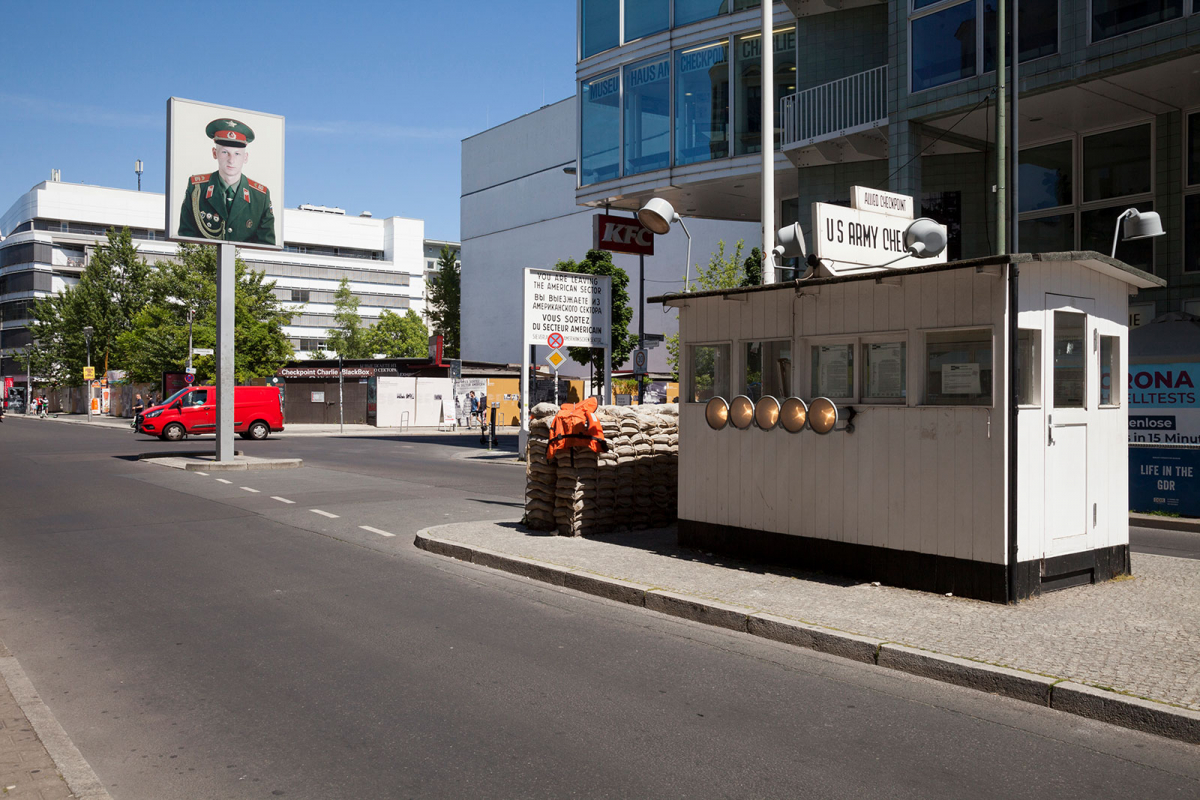
Commemorative signs at Checkpoint Charlie, 2021 © Berlin Wall Foundation, Gesa Simons
Although the border crossing had been erased from the cityscape, interest in the historical site and its traces grew over the course of the 1990s. As a result, in the late 1990s and early 2000s, the state of Berlin had installations made on the former West Berlin side of the border crossing to commemorate the historical site: An art installation consisting of a light box with two portrait photos of an U.S. and a Russian soldier and a stele with photographs and information have since been in place to commemorate the tank confrontation. As in many places in the city centre, a double row of cobblestones marks the course of the border wall. The private Wall Museum has also left its mark on the site at the same time: a replica of the four-language sector border sign has been erected and the Allied checkpoint booth has been reconstructed on a traffic island as it was in 1961.
In the years that followed, there were repeated debates about appropriate forms of commemoration at this historic site. These debates were sparked by snack and souvenir stalls, by actors in uniform posing for photographs in front of the checkpoint for a fee, and finally by a controversial action by the private Wall Museum. In 2004, the museum erected over 1,000 black wooden crosses and 120 segments of the Wall on the undeveloped land at the checkpoint to commemorate the victims of the inner-German border.
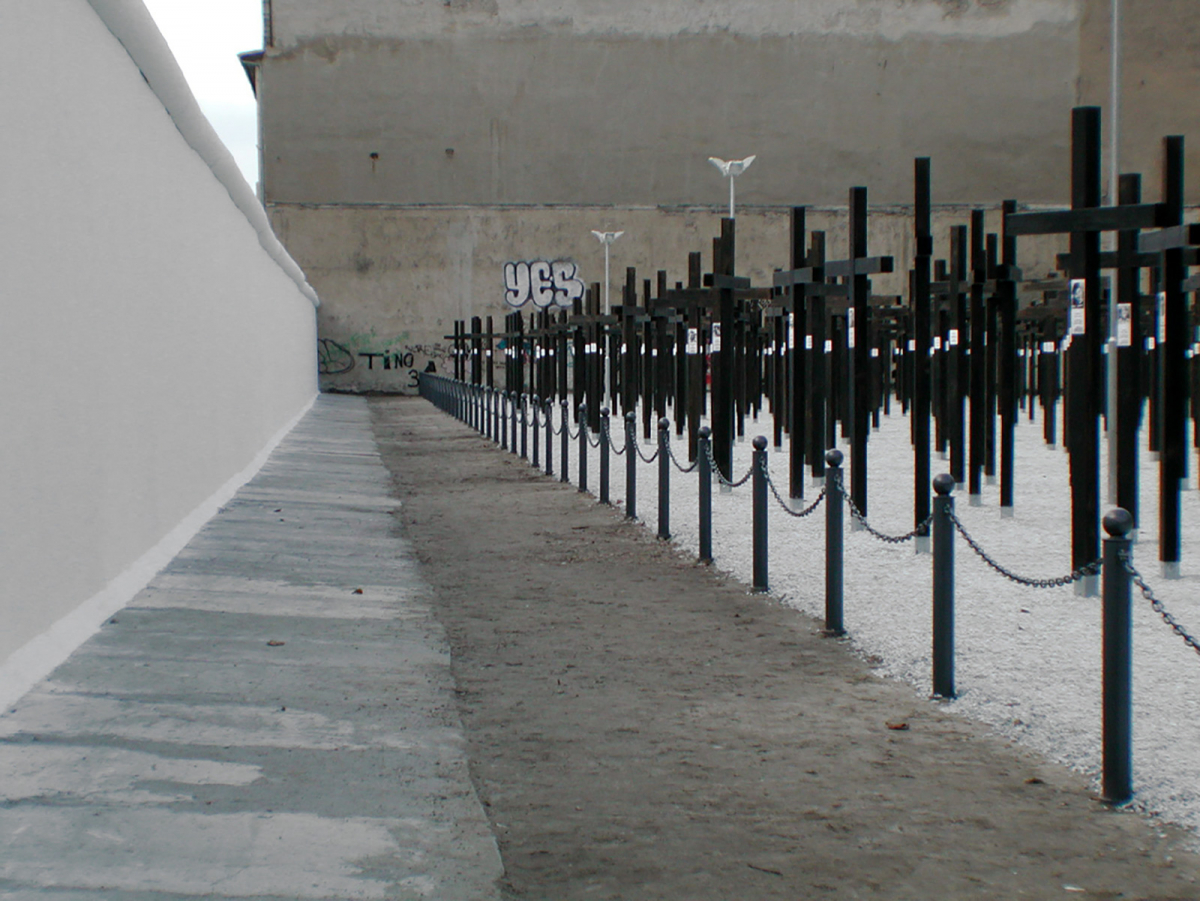
Controversial "Freedom Memorial" of the Wall Museum, 2004 © Stiftung Berliner Mauer, Yvonne Kavermann
The installation was widely criticised by experts, but was well received by the public, especially visitors, and revealed a gap in the culture of remembrance of the Berlin Wall. The Berlin Senate responded by commissioning an overall concept for the commemoration of the Berlin Wall, which was adopted in 2006 and supported by the German government. The plan was to link Berlin's many and varied Wall sites, which were to be thematically complementary. For Checkpoint Charlie and the remaining area of the former border crossing, it was decided that the international dimension of the Berlin Wall should be conveyed here.
However, due to unresolved land issues and immense encumbrances on the undeveloped land, this plan has not yet been realised. Despite extensive efforts and a citizens' initiative supported by experts from politics and academia, which is still campaigning for the establishment of a "Cold War Centre" at the former Checkpoint Charlie, it has only been possible to create temporary offers such as a construction fence exhibition and a small permanent exhibition in the BlackBox Cold War.
In recent years, the Berlin government has stepped up its efforts to qualify the memorial site. In 2020, the Berlin House of Representatives approved a development plan for the site, which allocates an area of 1,150 square metres for an educational and memorial site on Zimmerstrasse, east of Friedrichstrasse, and allows for a solitary museum building. The site to the west will be used to create a town square, which will provide more space for visitors to the historic site and be integrated into the overall concept of the “Forum Checkpoint Charlie”. In the course of the process, the spatial structure of the plots with the few remaining traces of the border crossing and the historic firewalls of the neighbouring buildings was included in the list of monuments of the state of Berlin.
This has paved the way for the upgrading of this world-famous memorial site. However, a political decision is still needed on how the “Forum Checkpoint Charlie” can be realised.
Future Checkpoint Charlie – Developement Plan 1-98
Here you will find information on the planning process of the state of Berlin at Checkpoint Charlie.
Vision Forum Checkpoint Charlie
Learn more about our ideas for the new place of remembrance.
